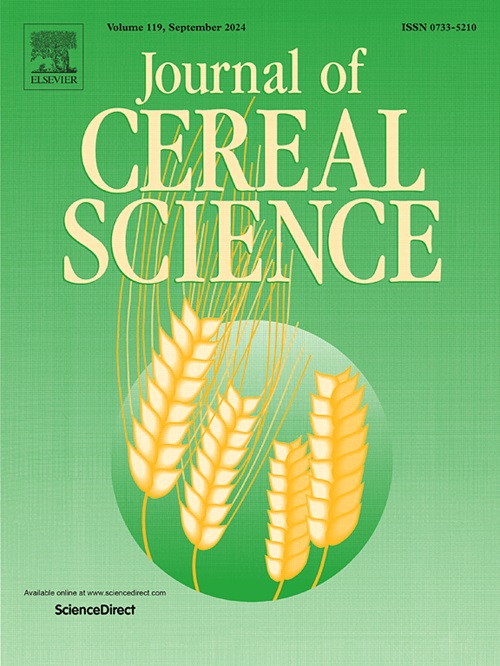用淀粉-脂质复合物代替米粉降低了无麸质意大利面中估计的血糖指数,提高了慢消化淀粉和抗性淀粉的含量
IF 3.9
2区 农林科学
Q2 FOOD SCIENCE & TECHNOLOGY
引用次数: 0
摘要
米粉是无麸质通心粉(GFF)中小麦粉的常用替代品;然而,米粉的高淀粉消化率和血糖生成指数可能会影响其健康功效。本研究用一种淀粉-脂质复合物(SLC)替代米粉,制备出了低血糖生成指数的无麸质通心粉,这种淀粉-脂质复合物是通过热诱导高直链淀粉与硬脂酸形成复合物而制备的。用 0%、10%、15% 和 20% 的 SLC 取代米粉制备 GFF。从 GFF 中估计血糖生成指数(eGI)、慢消化淀粉(SDS)和抗性淀粉(RS)含量等质量方面评估了最佳替代水平。结果表明,SLC 的 RS 和 SDS 含量高于原生大米淀粉(NRS)。与未添加 SLC 的 GFF(91.49)相比,用 20% 的 SLC 替代米粉制备的 GFF 的 SDS(20.87%)和 RS(4.34%)含量更高,eGI 值(67.06)更低。质构分析和扫描电子显微镜显示,GFF 样品之间存在显著差异。用 20% 的 SLC 取代米粉,可获得可接受的 GFF 质量,且烹饪损失较低。研究结果表明,SLC 具有巨大的潜力,可有效用于生产低升糖指数的无麸质通心粉和其他面食产品。本文章由计算机程序翻译,如有差异,请以英文原文为准。

Replacing rice flour with starch-lipid complex reduced estimated glycemic index and enhanced slow digestible starch and resistant starch content in gluten-free fettuccine
Rice flour is a commonly used alternative to wheat flour in gluten-free fettuccine (GFF); however, its high starch digestibility and glycemic index can hinder its health benefits. This study produced GFF with a low glycemic index by replacing rice flour with a starch-lipid complex (SLC) prepared by heat-inducing a high amylose rice starch to form a complex with stearic acid. The GFF was prepared by substituting rice flour with SLC at 0, 10, 15, and 20%. The optimal replacement level was evaluated from the quality aspects of estimated glycemic index (eGI), slow digestible starch (SDS), and resistant starch (RS) content in GFF. The results indicated that SLC contained higher levels of RS and SDS than native rice starch (NRS). The GFF prepared by replacing rice flour with SLC at 20% had higher SDS (20.87%) and RS (4.34%) content and lower eGI value (67.06) than GFF without SLC addition (91.49). Texture profile analysis and scanning electron microscopy revealed significant differences between the GFF samples. Replacing rice flour with SLC at 20% had acceptable GFF quality with low cooking loss. The findings suggested that SLC had great potential and could be effectively utilized to produce low glycemic index gluten-free fettuccine and other pasta products.
求助全文
通过发布文献求助,成功后即可免费获取论文全文。
去求助
来源期刊

Journal of Cereal Science
工程技术-食品科技
CiteScore
7.80
自引率
2.60%
发文量
163
审稿时长
38 days
期刊介绍:
The Journal of Cereal Science was established in 1983 to provide an International forum for the publication of original research papers of high standing covering all aspects of cereal science related to the functional and nutritional quality of cereal grains (true cereals - members of the Poaceae family and starchy pseudocereals - members of the Amaranthaceae, Chenopodiaceae and Polygonaceae families) and their products, in relation to the cereals used. The journal also publishes concise and critical review articles appraising the status and future directions of specific areas of cereal science and short communications that present news of important advances in research. The journal aims at topicality and at providing comprehensive coverage of progress in the field.
 求助内容:
求助内容: 应助结果提醒方式:
应助结果提醒方式:


